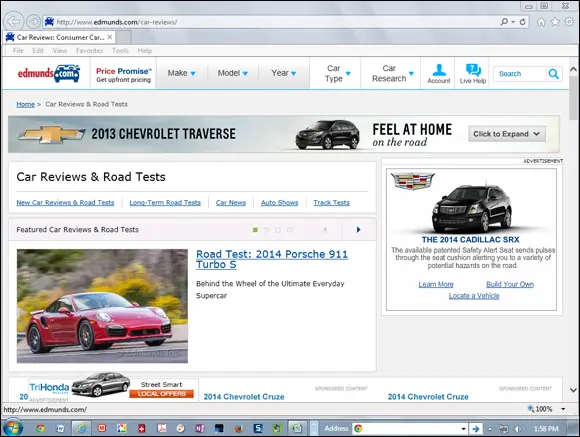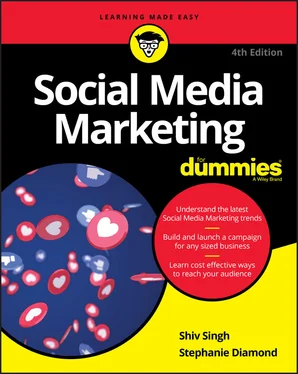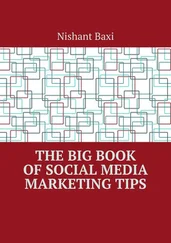Understanding the role of the influencer
To understand how social influence works, you need to look at how people are influenced in the real world, face to face. Social influence isn’t something new. Long before the web, people asked each other for advice as they made purchasing decisions. What one person bought often inspired another to buy the same product, especially if the original purchaser said great things about the product. That’s how human beings function; we’re influenced and motivated by each other to do things. We’re social beings, and sharing information about our experiences is all a part of social interaction.
Is influence bad? Of course not. More often than not, people seek that influence. People ask each other for advice; they share decision-making processes with friends and colleagues; they discuss their own experiences.
How much a person is influenced depends on multiple factors. The product itself is the most important one. When buying low-consideration purchases (those with a small amount of risk), people rarely seek influence, nor are they easily influenced by others. Buying toothpaste, for example, is a low-consideration purchase because each product may not be that different from the next one, and they’re all fairly inexpensive — so you won’t lose much money if you choose one that doesn’t fit your needs. On the other hand, buying a new car is typically a high-consideration purchase (a purchase that includes a large risk).
The price of the car, the maintenance costs, and its reputation for its safety all contribute to making it a high-consideration purchase, not to mention the fact that you want to identify with a certain brand versus another one. Social influence plays a much bigger role in car purchases than in toothpaste decisions. Mercedes-Benz has used social media marketing time and again to leverage influencers in motivating consumers to purchase its cars. The Mercedes-Benz Take The Wheel campaign for which they hired five top Instagram photographers to each take the wheel of a new Mercedes CLA was a standout example. (Figure 1-2 shows the webpage for this campaign.) Whoever got the most likes on Instagram when publishing about the car and their roadtrips got to keep the car. So as you can imagine, the photographers really worked hard!

FIGURE 1-2:The Mercedes-Benz Take The Wheel campaign.
 Social influence matters with every purchase, but it matters more with high-consideration purchases than low-consideration ones. Most consumers realize that when they’re making high-consideration purchases, they can make better and more confident purchasing decisions when they take into account the advice and experience of others who have made those decisions before them. That’s how influence works.
Social influence matters with every purchase, but it matters more with high-consideration purchases than low-consideration ones. Most consumers realize that when they’re making high-consideration purchases, they can make better and more confident purchasing decisions when they take into account the advice and experience of others who have made those decisions before them. That’s how influence works.
Considering the types of influencers
When discussing social media marketing, people often ask us whether this means that they should add product review features to e-commerce websites or advertise on social networks. Yes, product reviews and advertising are important, but there’s more to social influence than those two things. When you think about social influence in the context of your marketing objectives, you must separate social influencers online into three types: referent, expert, and positional. These categories come from thinking that social psychologists John French and Bertram Raven pioneered in 1959.
As a marketer seeking to deploy social media marketing techniques, the first question to answer is this: Which social influencers sway your consumers as they make purchasing decisions about your product? After you identify those social influencers, you can determine the best ways to market to them.
 Any major brand affinity or purchasing decision has referent, expert, and positional social influencers all playing distinct and important roles. Which one is most important may vary slightly based on the purchase, but the fact remains that you need to account for these three distinct types of social influencers in your marketing campaigns. If you’re a marketer trying to positively affect a purchasing decision, you must market not just to the consumer, but also to these influencers.
Any major brand affinity or purchasing decision has referent, expert, and positional social influencers all playing distinct and important roles. Which one is most important may vary slightly based on the purchase, but the fact remains that you need to account for these three distinct types of social influencers in your marketing campaigns. If you’re a marketer trying to positively affect a purchasing decision, you must market not just to the consumer, but also to these influencers.
A referent influencer is someone who participates on the social platforms. These users are typically in a consumer’s social graph and influence brand affinity and purchasing decisions through consumer reviews, by updating their own status and Twitter feeds, and by commenting on blogs and forums. In some cases, the social influencers know the consumers personally. Social graph is a term popularized by Marc Zuckerburg of Facebook and is used to describe the relationships that people may have on a social network and how they connect to one another.
Because the consumers know and trust their referent influencers, they feel confident that their advisers are also careful and punctilious. Because they’re people they trust, they value their advice and guidance over most other people. Referent influencers influence purchasing decisions more than anyone else at the consideration phase of the marketing funnel, according to various studies.
For example, if Shiv decides to make a high-consideration purchase such as a car, he might start by going online and discussing different cars with a few friends on Facebook or via Twitter. And then that weekend, he might meet those friends over coffee and carry on that discussion in person. They tell him about the cars they like, their own purchasing experiences, and which dealerships they’ve had experience with. This influence is considered referent influence because these friends sway him by the strength of their charisma and interpersonal skills, and they have this sway because he respects them. What’s worth pointing out, though, is that the friends whom he knows to be most informed about cars will probably influence him more than the others.
A consumer who’s mulling over a high-consideration purchase might also consult an expert influencer. An expert influencer is an authority on the product that the consumer is considering purchasing. Also called key influencers, they typically have their own blogs and huge Twitter followings, and rarely know their audiences personally.
When considering buying a car, suppose Shiv doesn’t turn just to friends for advice, but also visits some car review websites like Edmunds ( www.edmunds.com , shown in Figure 1-3). On these review websites, experts rate, rank, and pass judgment on cars. Because they put the cars through various tests and know the cars inside and out, their opinions matter. They’re the expert social influencers — people whom Shiv may not know personally but are recognized as authorities in a certain field. Their influence is derived from the skills or expertise that they — or broadly speaking, their organization — possess based on training.

FIGURE 1-3:The Edmunds car view website.
Читать дальше


 Social influence matters with every purchase, but it matters more with high-consideration purchases than low-consideration ones. Most consumers realize that when they’re making high-consideration purchases, they can make better and more confident purchasing decisions when they take into account the advice and experience of others who have made those decisions before them. That’s how influence works.
Social influence matters with every purchase, but it matters more with high-consideration purchases than low-consideration ones. Most consumers realize that when they’re making high-consideration purchases, they can make better and more confident purchasing decisions when they take into account the advice and experience of others who have made those decisions before them. That’s how influence works. Any major brand affinity or purchasing decision has referent, expert, and positional social influencers all playing distinct and important roles. Which one is most important may vary slightly based on the purchase, but the fact remains that you need to account for these three distinct types of social influencers in your marketing campaigns. If you’re a marketer trying to positively affect a purchasing decision, you must market not just to the consumer, but also to these influencers.
Any major brand affinity or purchasing decision has referent, expert, and positional social influencers all playing distinct and important roles. Which one is most important may vary slightly based on the purchase, but the fact remains that you need to account for these three distinct types of social influencers in your marketing campaigns. If you’re a marketer trying to positively affect a purchasing decision, you must market not just to the consumer, but also to these influencers.











